Choosing the right outdoor lighting size enhances both functionality and aesthetic appeal. This guide helps you select fixtures that complement your space‚ ensuring proper illumination and style.
1.1 What is Outdoor Lighting Size Guide?
An Outdoor Lighting Size Guide is a comprehensive resource that helps homeowners and designers select the ideal lighting fixtures for various outdoor spaces. It provides size recommendations‚ measurement tips‚ and placement guidelines to ensure fixtures complement the area while offering proper illumination. Whether for patios‚ pathways‚ or entryways‚ the guide assists in choosing fixtures that enhance both functionality and aesthetic appeal. By considering factors like door height‚ fixture proportions‚ and space dimensions‚ it ensures lighting is scaled appropriately for a polished and effective outdoor setup.
1.2 Importance of Proper Sizing in Outdoor Lighting
Proper sizing in outdoor lighting is crucial for both functionality and aesthetics. Fixtures that are too large or too small can disrupt the balance of your space‚ affecting visibility and visual appeal. Correct sizing ensures even illumination‚ preventing harsh shadows or overly bright spots. It also enhances safety by providing adequate light for pathways and entryways. Properly scaled lighting fixtures complement architectural features‚ creating a cohesive design. Additionally‚ well-sized lights contribute to energy efficiency and long-term durability‚ making them a practical and stylish investment for your home’s exterior. Proper sizing is key to achieving the perfect blend of form and function outdoors.
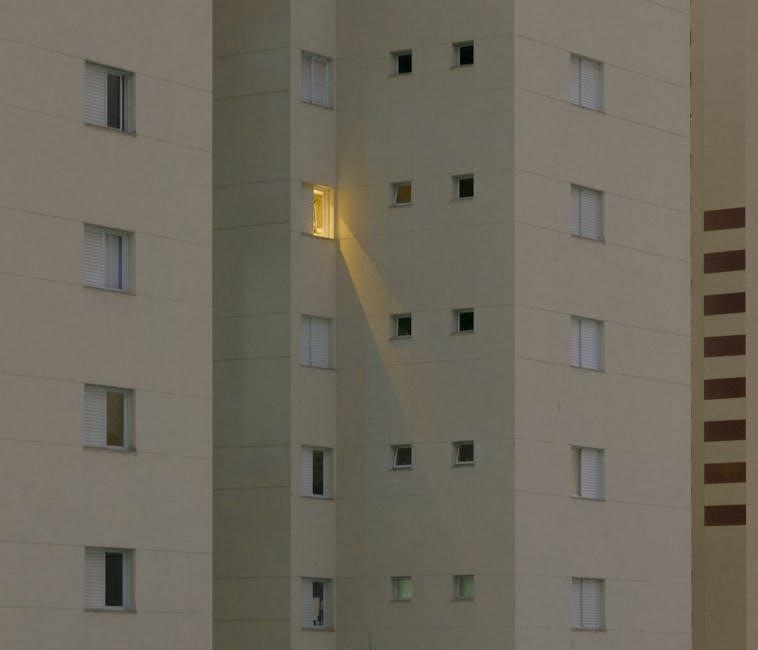
Key Considerations for Choosing Outdoor Lighting Sizes
Choosing outdoor lighting sizes involves measuring the space‚ selecting appropriate fixtures‚ considering mounting height‚ placement‚ climate‚ and architectural scale for optimal functionality‚ aesthetics‚ and energy efficiency.
2.1 Measuring Your Outdoor Space
Measuring your outdoor space is crucial for selecting the right lighting fixtures. Start by assessing the length‚ width‚ and shape of the area to determine the coverage needed. For pathways‚ measure the width and length to choose appropriately sized fixtures. For larger areas like patios or decks‚ calculate the square footage to ensure even illumination. Consider the purpose of each space‚ as this influences the number and placement of lights. Accurate measurements help in selecting fixtures that complement the space without overwhelming it‚ ensuring both functionality and aesthetic appeal.
2.2 Understanding Fixture Size and Scale
Understanding fixture size and scale ensures your outdoor lighting complements the space. Measure the dimensions of the fixtures‚ including height‚ width‚ and depth‚ to align with your area’s proportions. Consider the architectural style of your home and the size of surrounding features‚ such as doors or plants. A fixture that is too large may overwhelm the space‚ while one that is too small may lack visual impact. Choose fixtures that balance functionality with aesthetic appeal‚ ensuring harmony between the lighting and its surroundings. Scale is key to achieving a cohesive and inviting outdoor design.
2.3 Mounting Height and Placement Guidelines
Mounting height and placement are critical for both functionality and aesthetics. For wall-mounted fixtures‚ ensure they are installed at a height proportional to the wall and door size‚ typically between 60-66 inches above the ground. Pathway lights should be low to the ground‚ around 12-18 inches tall‚ to avoid obstructing views. Hanging fixtures should be mounted high enough to provide ample clearance‚ usually 7-8 feet‚ to prevent collisions. Placement should consider traffic flow‚ ensuring lights are spaced evenly and angled correctly to eliminate glare. Proper mounting height enhances safety‚ visibility‚ and the overall visual appeal of your outdoor space.
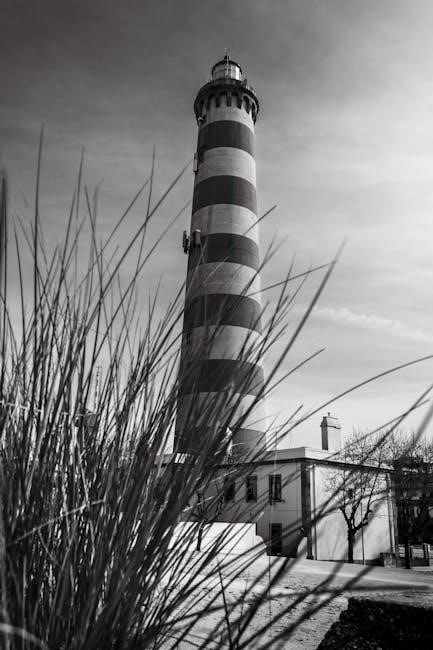
Outdoor Lighting Fixture Types and Their Sizes
Outdoor lighting fixtures vary in size and type‚ including pathway‚ wall-mounted‚ hanging‚ and post-mounted options‚ each sized to fit specific spaces and purposes for optimal illumination.
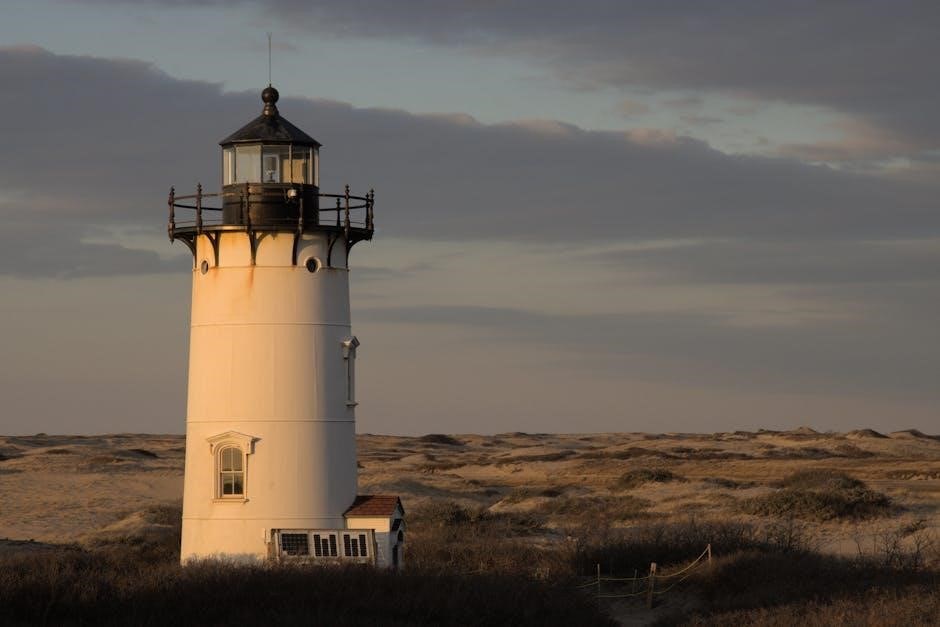
3.1 Pathway Lighting: Recommended Sizes and Heights
Pathway lighting fixtures typically range in size from 8 to 12 inches in height‚ with widths varying between 4 to 8 inches. The ideal height for installation is 8-12 inches above the ground to ensure visibility without causing glare. Spacing should be every 8-10 feet for even illumination. Bollard-style pathway lights are usually taller‚ around 18-36 inches‚ while smaller fixtures like well lights are flush-mounted for a sleek look. Choose sizes proportional to the width of your walkway to maintain balance and functionality. Proper sizing ensures safety and aesthetic appeal in outdoor spaces.
3.2 Wall-Mounted Fixtures: Standard Dimensions
Wall-mounted outdoor lighting fixtures typically range in height from 8 to 20 inches‚ with widths between 6 to 12 inches. The backplate size‚ which mounts to the wall‚ usually measures 4 to 8 inches in height and width. For entryways‚ fixtures are often mounted at 66 inches above the ground. Spacing guidelines recommend installing fixtures every 8-12 feet for balanced illumination. Choose sizes that complement your home’s architecture‚ ensuring fixtures are proportional to the wall and surrounding features. Weather-resistant materials like brass or aluminum are common‚ offering durability and style for various design preferences.
3.3 Hanging Fixtures: Size and Drop Length
Hanging outdoor lighting fixtures typically range in size from 8 to 24 inches in diameter‚ depending on their design and the space they illuminate. The drop length‚ or how far the fixture hangs from its mounting point‚ should be at least 7 feet above the ground to ensure safety and visibility.
Fixtures made of durable materials like metal or weather-resistant plastic are ideal for outdoor use‚ while glass or acrylic options offer stylish designs. Choose hanging fixtures that complement your home’s architecture‚ ensuring they are proportionate to the area they are lighting. Proper sizing enhances both functionality and aesthetic appeal.
3.4 Post-Mounted Lights: Height and Base Size
Post-mounted lights are ideal for pathways‚ driveways‚ and gardens‚ typically ranging in height from 48 to 72 inches. The base size should be proportional to the fixture’s height‚ with diameters between 4 to 8 inches for stability. Materials like aluminum or steel are common for durability. Weather-resistant finishes ensure longevity. The height ensures proper illumination without glare‚ while the base size prevents wobbling. Choose sizes that match your space’s scale for balanced lighting and aesthetics. Proper sizing ensures functionality and enhances outdoor safety and ambiance.

Size Recommendations for Specific Outdoor Areas
This section provides size recommendations for specific outdoor areas‚ ensuring lighting fixtures complement the space’s purpose and scale while enhancing functionality and aesthetics.
4.1 Front Porch and Entryway Lighting Sizes
Front porch and entryway lighting should be proportionate to the door and surrounding architecture. Fixtures are typically 24-36 inches tall for sconces and 8-12 inches wide. For larger doors or grand entryways‚ consider fixtures up to 48 inches tall. Mount lights at eye level (66-72 inches from the ground) for optimal visibility and aesthetics. Ensure the size complements the door’s height‚ using a general rule of 1/3 to 1/4 of the door’s height for fixture size. Proper scaling enhances curb appeal and functionality‚ creating a welcoming first impression.
4.2 Patio and Deck Lighting: Size and Layout Tips
Patio and deck lighting fixtures should complement the space while providing adequate illumination. Tabletop fixtures are typically 10-14 inches in diameter‚ while floor lamps range from 18-24 inches in height. String lights or fairy lights are ideal for ambient lighting‚ spaced 8-12 feet apart. For deck railings‚ mount lights 36-42 inches high to avoid glare. Place pathway lights 4-6 feet apart along walkways. Ensure fixtures are scaled to the furniture and space size‚ balancing functionality with aesthetics for an inviting outdoor atmosphere. Proper sizing and layout enhance safety and ambiance‚ making outdoor spaces more enjoyable year-round.
4.3 Driveway Lighting: Spacing and Fixture Size
Driveway lighting fixtures should be sized to provide clear visibility while maintaining a balanced aesthetic. Typical fixture diameters range from 9 to 12 inches for bollard-style lights‚ while taller post-mounted fixtures can be 18-24 inches in height. Spacing should be every 15-20 feet to ensure even illumination. For wider driveways‚ consider larger fixtures or additional units to cover the area effectively. Mount fixtures 12-15 inches above ground level to prevent glare and ensure safety. Solar-powered lights are a popular choice‚ offering energy efficiency and easy installation. Proper sizing and spacing enhance visibility‚ safety‚ and curb appeal.
4.4 Garden and Landscape Lighting: Size Variations
Garden and landscape lighting fixtures vary in size to suit different plants and spaces. Small fixtures‚ like 6-8 inch stake lights‚ are ideal for highlighting flower beds or small shrubs. Larger fixtures‚ such as 12-18 inch well lights‚ are better for illuminating trees or larger garden features. The size should complement the scale of the plants and the area they are lighting. Fixtures for pathways are typically low-profile‚ while spotlights for trees may be larger to ensure adequate coverage. Choose sizes that blend seamlessly into the landscape without overpowering the natural beauty of the garden.

How to Measure for Outdoor Lighting Fixtures
Measuring involves assessing space dimensions‚ fixture placement‚ and ensuring scale matches the area. Consider height‚ width‚ and coverage to achieve balanced‚ functional lighting.
5.1 Calculating Fixture Size Based on Door Height
Fixture size can be determined by measuring the height of the door or entryway. A general rule is to choose a fixture that is 1/3 to 1/4 the height of the door. For example‚ a standard 8-foot door pairs well with a fixture measuring 30-36 inches tall. This proportion ensures balanced aesthetics and functionality. Measure from the ground to the top of the door frame for accuracy. Consider the fixture’s style and light spread to maintain harmony with the space. Always check manufacturer guidelines for specific sizing recommendations.
5.2 Determining the Correct Width for Your Space
To determine the correct width for your outdoor lighting fixtures‚ assess the space where they will be installed. For entryways‚ match the fixture width to the door width or slightly narrower. For pathways‚ consider the walkway’s width and choose fixtures that complement it without obstructing movement. Measure the area to ensure the fixture’s scale aligns with the space. Proportional sizing enhances both functionality and visual appeal. Always consider the fixture’s design and light coverage to achieve a balanced look that suits your outdoor setting and improves safety.
5.3 Measuring for Pathway and Walkway Lights
When measuring for pathway and walkway lights‚ consider the spacing between fixtures to ensure even illumination. Typically‚ lights are placed 8-10 feet apart for uniform coverage. Measure the total length of the walkway or path to determine how many fixtures are needed. Fixture size should complement the space without overwhelming it. For wider walkways‚ slightly larger fixtures or additional lights may be necessary. Always check the manufacturer’s specifications for light spread to ensure proper coverage and safety. Practical measurements will help create a well-lit and inviting outdoor space;
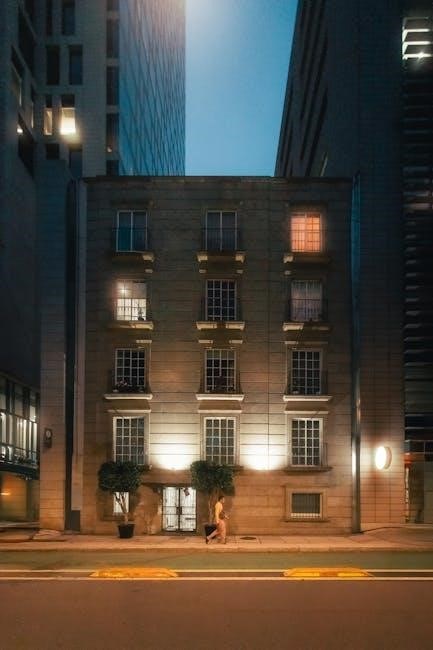
Regional and Climate Considerations
Regional and climate factors significantly influence outdoor lighting choices. Harsh weather conditions‚ such as heavy rain or snow‚ require durable‚ weather-resistant fixtures. Coastal areas may need corrosion-resistant materials to withstand salt exposure. Understanding local climate demands ensures long-lasting and functional lighting solutions.
6.1 Weather-Resistant Lighting Sizes
Weather-resistant lighting fixtures are designed to withstand harsh outdoor conditions like rain‚ snow‚ and extreme temperatures. These lights often feature durable materials such as stainless steel or brass‚ with sizes ranging from compact pathway lights (8-12 inches tall) to larger wall-mounted fixtures (12-24 inches wide). The sizing ensures functionality while maintaining aesthetic appeal. IP ratings (e.g.‚ IP44 or higher) are crucial for protection against moisture and dust. Choosing the right size and material ensures longevity and performance in various climates‚ making weather-resistant lighting a practical choice for outdoor spaces exposed to the elements.
6.2 Lighting Size for Coastal vs. Inland Areas
Lighting size varies between coastal and inland areas due to differing environmental conditions. Coastal regions often require larger fixtures to withstand strong winds and saltwater corrosion‚ with sizes ranging from 18-36 inches for post-mounted lights. Inland areas‚ with calmer weather‚ can opt for smaller fixtures (12-24 inches)‚ focusing on style and functionality. Coastal lighting may use materials like marine-grade brass‚ while inland areas might prefer aluminum or steel. Size and material choices ensure durability and visual harmony‚ adapting to each environment’s unique demands for reliable outdoor illumination.
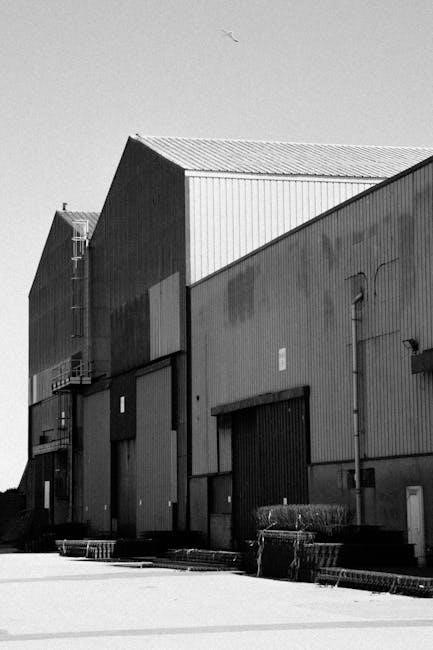
Tips for Installing Outdoor Lighting Fixtures
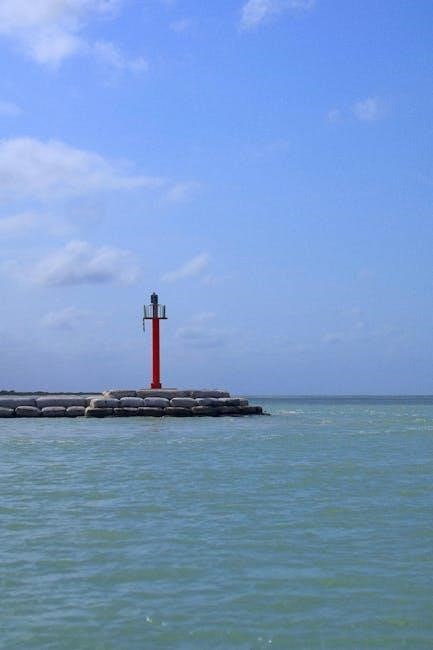
- Plan the layout to ensure even illumination and safety.
- Follow manufacturer instructions for mounting heights and spacing.
- Test fixtures before final installation to avoid adjustments.
7.1 How to Mount Fixtures at the Correct Height
Mounting outdoor lighting fixtures at the correct height ensures proper illumination and safety. For pathway lights‚ position them 12-18 inches above the ground to avoid glare. Wall-mounted fixtures should be installed at eye level or slightly higher to prevent direct light in the eyes. Hanging lights‚ like lanterns‚ are best placed 7-8 feet high for front porches and 6-7 feet for side paths. Always follow manufacturer guidelines and consider the fixture’s light spread to achieve optimal coverage. Test the lighting at night to ensure the height provides the desired effect. Adjustments may be needed for taller fixtures or unique spaces.
7.2 Spacing Guidelines for Even Illumination
Proper spacing of outdoor lighting fixtures ensures even illumination and avoids harsh shadows or overly bright spots. For pathway lights‚ space them 10-15 feet apart‚ depending on their wattage and the area’s size. Patio and deck lights should be spaced 8-12 feet apart to create a balanced glow. Wall-mounted fixtures should be placed 6-8 feet apart to cover the area without overlap. Use the “fixture spacing rule‚” where spacing is 2-3 times the fixture’s height. Adjust spacing based on brightness and desired ambiance. Overlapping circles of light create seamless coverage. Consider energy-efficient options‚ which may allow for wider spacing.

Maintenance and Upkeep of Outdoor Lighting
Regular maintenance ensures outdoor lighting efficiency and safety. Clean fixtures‚ inspect wiring‚ and replace worn parts to maintain performance and extend lifespan. Schedule seasonal checks.
8.1 Cleaning and Adjusting Fixtures
Regular cleaning and adjustments are essential for maintaining outdoor lighting performance. Use a soft cloth and mild detergent to remove dirt and debris from fixtures. Avoid abrasive materials that may scratch surfaces. For glass or acrylic covers‚ ensure they are clear to maintain light output. Check for loose connections or misaligned fixtures and tighten or adjust them as needed. This prevents uneven lighting and potential safety hazards. Inspect for damage or wear‚ such as corroded parts or broken lenses‚ and address issues promptly. Proper maintenance ensures optimal illumination and extends the lifespan of your outdoor lighting system.
8.2 Replacing or Upgrading Fixtures
Replacing or upgrading outdoor lighting fixtures is essential when they become outdated‚ damaged‚ or no longer meet your needs. Assess the current lighting requirements and ensure new fixtures align with your system’s voltage and wattage specifications. Choose fixtures that match the size and style of your existing setup for consistency. Consider energy-efficient options like LEDs for long-term savings. When upgrading‚ measure the space to ensure the new fixture fits properly. If unsure‚ consult a professional for installation. Always check compatibility with existing hardware to avoid electrical issues. Upgrading fixtures can enhance both functionality and aesthetics of your outdoor lighting system.
Proper sizing enhances functionality and aesthetics. Use this guide to make informed decisions‚ ensuring your outdoor lighting is both practical and visually appealing for years to come.
9.1 Final Tips for Choosing the Right Outdoor Lighting Size
When selecting outdoor lighting‚ always measure your space accurately and consider the fixture’s purpose. Choose sizes proportional to your home’s architecture and surroundings. For pathways‚ opt for low-profile fixtures‚ while entryways may require larger statement pieces. Ensure mounting heights align with usage—lower for pathways‚ higher for driveways. Select weather-resistant materials suitable for your climate. Test lighting at night to ensure even illumination. Finally‚ consult a professional if unsure‚ as proper sizing enhances both safety and curb appeal‚ creating a welcoming outdoor environment tailored to your needs.
9;2 Benefits of Properly Sized Outdoor Lighting
Properly sized outdoor lighting enhances your home’s exterior aesthetics‚ ensuring a balanced and inviting appearance. It provides adequate illumination for safety and functionality while avoiding harsh glare. Correct sizing also highlights architectural features and landscaping‚ boosting curb appeal. Energy efficiency is improved as appropriately sized fixtures consume less power without compromising light quality. Proper sizing deters intruders by eliminating dark spots and ensures even lighting distribution. Ultimately‚ it creates a welcoming ambiance‚ making your outdoor spaces functional‚ secure‚ and visually appealing‚ while also protecting your investment in lighting fixtures.
